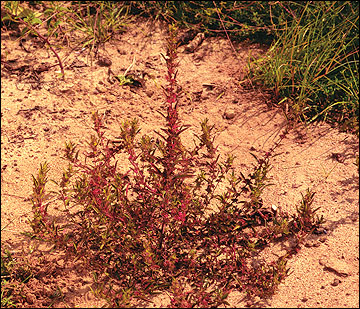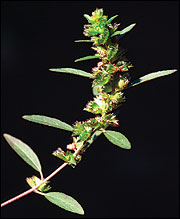Three-seeded mercury
- Acalypha gracilens, A. rhomboidea
- Copperleaf, Large-seeded mercury
Forb
Three-seeded mercury attains a coppery hue in the fall. By this time, seeds should have ripened and may be used by bobwhites.
©Ted Bodner, USDA-NRCS Plants Database
Description
These annual plants are characterized by longitudinally folded, lobed, leaflike bracts that persist throughout the growing season. The seeds are small, egg-shaped and dark brown to light gray or tan. The leaves and leafy bracts change from green to copper in the fall as the mature seeds drop. Three-seeded mercury can be found throughout the Midwest from bottomland forests to upland prairies, pastures, old fields and disturbed places. Three-seeded mercury responds well to disking and fertilizer and often occurs along crop fields.
Bloom period
May to October
Use by bobwhites
Many insects are attracted to three-seeded mercury, making it a component of brood habitat for quail. Seeds are readily used by quail for food.




